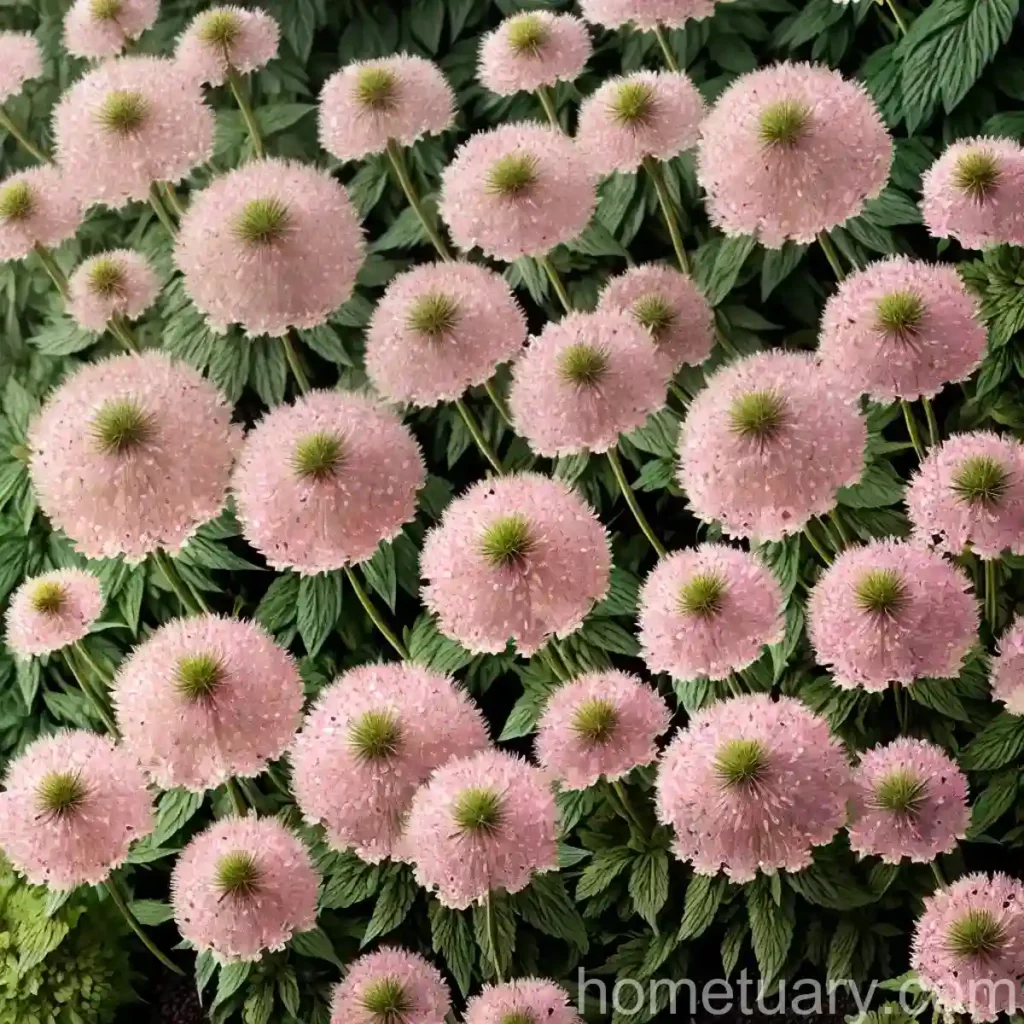greater masterwort (Astrantia ‘Buckland’)
What is Plant
Plants are multicellular organisms in the kingdom Plantae that use photosynthesis to produce their own food. They are essential for all life on Earth as they provide oxygen, food, and habitat for countless organisms.
Key Takeaways – greater masterwort (Astrantia ‘Buckland’)
The greater masterwort, scientifically known as Astrantia ‘Buckland,’ is a stunning perennial plant that adds a touch of elegance to any garden. This captivating plant is revered for its unique, star-shaped flowers and its versatility in various garden settings.
Culture
The culture of greater masterwort involves understanding its specific requirements for optimal growth. This includes aspects such as water, sunlight, fertilizer, soil, pruning, and propagation.
Uses
Greater masterwort serves both aesthetic and practical purposes in the garden. Its delicate flowers make it an excellent choice for cut flower arrangements, while its ability to attract pollinators adds ecological value to the landscape.
Water
Proper watering is crucial for the health and vitality of greater masterwort. The soil should be kept consistently moist, but not waterlogged. During periods of hot and dry weather, regular watering is essential to prevent the plant from wilting.
Sunlight
Greater masterwort thrives in partial shade to full shade, making it an ideal choice for gardens with limited direct sunlight. It is important to provide the plant with the right amount of sunlight to ensure healthy growth and abundant flowering.
Fertilizer
Regular fertilization is beneficial for supporting the growth and blooming of greater masterwort. A balanced, all-purpose fertilizer can be applied in spring to provide the plant with essential nutrients.
Soil
The soil should be rich, well-draining, and slightly acidic for optimal growth of greater masterwort. Amending the soil with organic matter such as compost can enhance its fertility and structure, providing an ideal growing environment for the plant.
Pruning
Pruning plays a crucial role in maintaining the health and appearance of greater masterwort. Deadheading spent flowers can prolong the blooming period and prevent the plant from self-seeding excessively.
Propagation
Greater masterwort can be propagated through division, making it possible to create new plants from existing ones. Dividing the plant in early spring or fall allows for the establishment of additional specimens in the garden.
Container Popularity
The compact size and striking appearance of greater masterwort make it a popular choice for container gardening. Its elegant blooms and lush foliage can enhance the visual appeal of any outdoor space.
Container Common Diseases
While greater masterwort is relatively resistant to diseases, it can occasionally be affected by fungal infections such as powdery mildew. Proper air circulation and maintaining plant health can help prevent such issues.
Disease Diagnosis
Diagnosing diseases in greater masterwort involves observing the symptoms such as leaf discoloration, wilting, or unusual growth patterns. Identifying the specific disease allows for targeted treatment measures to be implemented.
Common Pests
Greater masterwort may attract pests such as aphids or snails, which can affect its overall health and appearance. Regular inspection and prompt intervention can help mitigate potential pest-related damage.
Botanist’s Tips
- Observe plant behavior throughout the growing season to gauge its health and response to cultural practices.
- Implement mulching to help retain soil moisture and suppress weed growth around greater masterwort.
- When dividing the plant, ensure that each division has sufficient roots and shoots to support its establishment.
Fun Facts
- The name “Astrantia” is derived from the Latin word “astrum,” which means “star,” alluding to the plant’s star-shaped flowers.
- Greater masterwort is native to regions of Central and Eastern Europe, where it thrives in woodland habitats.
Links to External Resources
For more information on Astrantia ‘Buckland’ and related topics, refer to the following resources:
In conclusion, greater masterwort (Astrantia ‘Buckland’) is a remarkable plant that offers both visual appeal and ecological benefits. Understanding its specific cultural requirements, uses, and maintenance practices can help gardeners successfully cultivate and enjoy this enchanting perennial.
In this blog post, we discussed the cultural aspects of the greater masterwort plant, including its requirements for water, sunlight, fertilizer, soil, pruning, and propagation. Additionally, we covered its uses, common diseases, pests, and provided botanist’s tips for optimal care. To enhance the reader’s understanding, the inclusion of fun facts and external resource links contributes to a comprehensive and informative piece.















